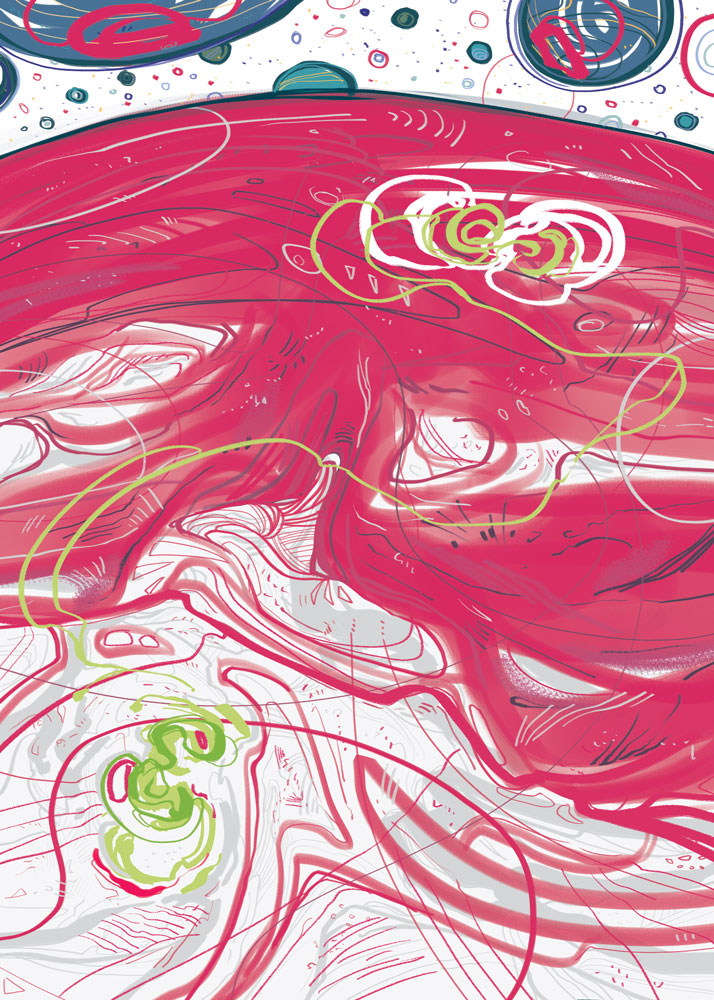New ‘flavour’ of neutrino observed
After just 55 days of measurement, the Daya Bay Reactor Neutrino Experiment in the Guangdong province of China has measured theta-13, a parameter that helps describe how neutrinos change from one “flavour” to another. Theta-13 was the only one of the three so-called mixing angles that had not yet been measured.
Although the Double Chooz experiment in France reported a measurement of the mixing angle in November, their results contained a large uncertainty. The Daya Bay result is the first time the value for theta-13 has been pinned down at a statistically significant level.
“This is arguably the most important physics result ever to come out of China,” said Robert McKeown in Science, an American researcher and Daya Bay collaborator.
Neutrino oscillation, the process by which neutrinos of one flavour change to another, is described in a mathematical model that includes five parameters. All of these but one had already been experimentally determined. The Daya Bay experiment was built in a good position to measure the final mixing angle — it is close to some of the world’s largest nuclear reactors, and able to take advantage of the large quantity of electron antineutrinos produced in the reactors for its measurements.
Particle physicists are excited that theta-13 has a non-zero value, which could help them explain why the universe contains so much matter and so little antimatter.
Further evidence for the existence of the Higgs boson
Scientists analysing data from the now-defunct Tevatron particle accelerator in the U.S. have reported seeing hints of the Higgs boson, the last unobserved particle in the Standard Model of particle physics. The Tevatron, which was shut down in September 2011, smashed protons and antiprotons together to create and measure fast-decaying particles rarely seen in nature. While the results are promising, they do not pass the threshold required for statistical significance.
The Higgs boson can decay into several different particles, but some particles are more likely candidates than others. In examining the complete dataset from the accelerator’s 28-year run, Fermilab scientists observed an unusually high number of potential Higgs decays. Their data indicates a Higgs with a mass between 115 and 135 gigaelectronvolts (GeV). This agrees with previous data from the Large Hadron Collider that indicates a mass of 124 to 126 GeV.
According to particle physicists, the search for the Higgs is almost over. “By the time the LHC goes into its first long stop at the end of this year, we will either know that a Higgs particle exists or have ruled out the existence of a Standard Model Higgs,” said Sergio Bertolucci, research director of CERN.
CFC-related ozone depletion: the man who made the connection
F. Sherwood Rowland, the Nobel-winning chemist who first showed that chlorofluorocarbons (CFCs) cause ozone depletion, died on March 10. He was 84.
Rowland, along with colleagues Mario J. Molina and Paul J. Crutzen, won the 1995 Nobel Prize for Chemistry: “for their work in atmospheric chemistry, particularly concerning the formation and decomposition of ozone.” Their work in the early 1970s led to some restrictions on the then widely used CFCs. In 1987, a few years after an ozone hole was discovered above Antarctica, the Montreal Protocol was negotiated, banning CFCs and other chemicals harmful to the ozone layer.
“[Rowland] saved the world from a major catastrophe,” said Kenneth Janda, dean of physical sciences at the University of California, Irvine, Rowland’s institution.
Ozone plays a key role in preventing harmful ultraviolet radiation from reaching the surface of the Earth. When CFCs reach the ozone layer, ultraviolet radiation causes them to separate into their constituent parts, including chlorine. Chlorine increases the speed at which ozone decomposes, which throws the cycle of ozone generation and decomposition out of equilibrium and leads to ozone depletion.
Calculations made by Rowland and Molina in 1974 showed that if CFC use continued at then-current rates, the ozone layer would be depleted within decades. Their paper was widely criticized at the time, but we now know that they actually underestimated the risk.



